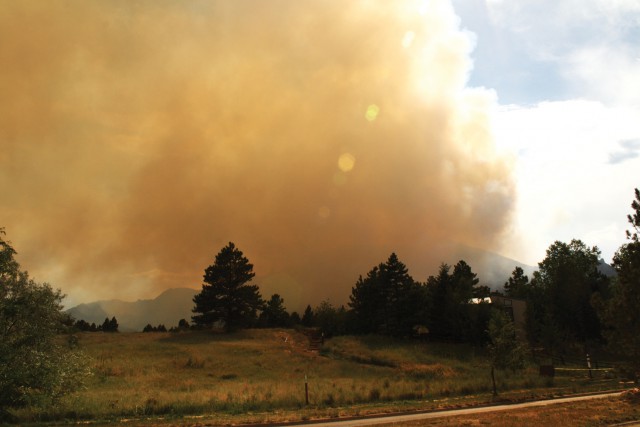
Many Boulder residents rely on the beautiful and abundant outdoors to keep physically fit and mentally sound.
But when we look out our windows and see a pillar of smoke rising from behind the Flatirons, we may consider alternative ways to stay in shape.
In fact, in some areas, we’ll have to: Boulder Open Space and Mountain Parks has closed all open space trails west of Broadway from the Flatirons Vista trailhead to Canyon Boulevard. But fear not, because active Boulderites can keep safe from smoke exposure by following a few simple and straightforward guidelines.
Smoke exposure warnings are usually targeted toward children, the elderly, pregnant women and people with respiratory illnesses. Smoke is made of very fine particles that can find their way into the deepest crevices of your lungs, which can cause a temporary decrease in lung function, even in healthy adults.
As of Wednesday, June 27, Boulder County issued an air quality warning for groups that are sensitive to air contaminants.
According to Michael Richen, an industrial hygienist from Boulder County Public Health, “two outdoor contaminants are pushing these bad ratings.”
“Particulates are high; also ozone is high,” says Richen. “Ozone is a lung irritant. Your body dissolves ozone and makes an acid in your lungs — in your mucous membrane — so it’s very irritating. … They also deposit fine particulates in the lungs. Combining these two can make it worse.”
If you fit into one of the sensitive categories and can see or smell smoke, your safest bet is to stay indoors. Because of the unfortunate (but not coincidental) timing of wildfires and heat waves, these people are advised to use air conditioning to stay cool, but to be sure the fresh-air intake is closed and the air filter is clean.
But for those of us who are active and haven’t quite reached our twilight years, staying indoors may prove to be difficult. After all, the great outdoors is why we’re in Boulder in the first place.
As a guideline, the Center for Disease Control suggests gauging smoke exposure warnings on your visibility range when there is smoke in the air. When up-to-date air quality information is not readily available, you can use these guidelines to make informed decisions regarding exercise.
As long as you can see farther than five miles and are not particularly sensitive to respiratory problems, you are most likely fine to go about your usual exercise routines. However, children, seniors and people with heart or lung problems should avoid prolonged exercise when visibility ranges between three and five miles.
Below three miles of visibility is when exercise and outdoor activity starts to get dicey for people of all ages. The center advises that everyone, including healthy adults, should at the very least limit heavy or prolonged exercise.
If visibility is below one mile, get out of there. Unfortunately, you’re going to have to get your exercise from packing up your bags and heading for safety.
If you can feel the effects of smoke exposure after exercise (such as lung irritation and coughing), it might be time to take exercise indoors. However, Richen cautions that not all buildings protect people from outdoor pollutants.
“Many [commercial or large buildings’ vent systems] can eliminate the introduction of outside fresh air and recirculate,” says Richen. However, “if they’re running a lot of outside air through the building and it’s smoky outside, it’s going to be the same inside.”
To be on the safe side, the air quality expert suggests checking with your gym to see how they circulate their air.
Animals are also vulnerable to smoke exposure. So if you decide to brave the smoke and go on your morn ing jog anyway, maybe leaving Fluffy at home is the best decision.
Above all else, use common sense.
If your lungs ache and you’re coughing, maybe it’s time to consider your respiratory health instead of your physical fitness.
The long-term outlook is hazy.
“The nature of smoke and how it interacts with meteorology and how it moves is just so highly variable,” says Christopher Dann, a public information officer at the Colorado Department of Public Health and Envrionment. “The situation can change from hour to hour. We can’t predict the smoke impact with any reasonable certainty beyond the next several hours and even then it can be impacted dramatically by changing weather and by the effectiveness of the firefighting activity,” Dann says.
For up to date information on air quality in your area, visit http://www.colorado.gov/airquality/colorado_summary.aspx.
Respond: [email protected]














